So this weekend’s big adventure is going to be taking my son to check into the dorms at his new college, which involves a five-hour drive each way. consequently, things are a bit busy around here than they usually are on a Saturday, and I’m operating under just a bit more tension. Still, I wouldn’t dream of leaving you without your regular Sunday morning’s delivery of goodness (or at least, wordiness) so here I am, banging away on the keyboard just for you once again.
Before we get into the heart of things, I wanted to thank everybody who’s come out in support for the new line of X-MEN titles so far. Pretty much everything that we’ve put out so far has sold out and gone to a second printing, and my hope is that this is a trend that can continue. I know that the real yardstick of how well we’re doing is going to be more about what the #3s and #4s are selling, but so far, so good.
I do want to take a moment, though, to correct an oversight and an apprehension that some readers may have. Because I’m heading up the crew, most people, rightly or wrongly, assume that I’m responsible for every decision, good or bad. And while the bad ones are probably my fault, the good ones are often the work of my team of junior X-Editors. So I’d like to take a moment to acknowledge their work here publicly, as they’ve been putting as much into these books as I have, certainly, and more in many cases. This includes Mark Basso and Drew Baumgartner, the editors of the “claw” office who handle WOLVERINE and X-FORCE as well as DEADPOOL and other related series, Darren Shan and Noah Sharma who oversee X-FACTOR, MYSTIQUE and SENTINELS as well as the grind that is the X-MEN: FROM THE ASHES weekly infinity comic on MARVEL UNLIMITED, Annalise Bissa, who is the Associate Editor on all of my projects while helming NYX and PHOENIX and HEIR OF APOCALYPSE as the main editor, and Martin Biro, who is similarly the Assistant Editor on all of my books and who has also put together DAZZLER. So let’s please not overlook them, especially when you have some praise to share for one of the titles that is more their doing than mine. (You can still hurl all of the complaints at me, though, the buck stops here.)
And now, everybody’s favorite section—at least those people who ask questions anyway—the Q & A feature!
Biggu
I know it won't happen for some time since it's a "return to basics" to make it easier to onboard new readers but is there any chance we'll address the phoenix stuff from the end of x-men forever, Namely Hope Summers' status, in the Phoenix book down the road?
I don’t really know that there’s much of anything to address there, Biggu. I feel like Kieron Gillen did a good job of laying everything out. But if you mean X-Characters reacting to the sacrifice of Hope Summers, then you’ll likely need to wait until early in 2025, when we have something coming up that’ll touch on that subject at least a little bit.
Bob Fifteen
You've talked a little about how the various editorial offices (X-office, Avengers, Spider-Man etc.) are custodians of associated characters. How does that play out with well-known characters (or team concepts) who don't have a series right now, aren't tied to a particular office (at least from an outside fan's perspective) but still have a fairly long history (and, in commercial terms, are well-established brands)?
There aren’t as many things like this as you might think, Bob—most of our key properties are being overseen by somebody in the Editorial team. And when there isn’t any present custodian, the last person who had say over a given character’s world tends to be the go-to authority on using elements of it elsewhere.
Zac
Why do you think the characters in the Avengers seem to be able maintain solo character series better than X-Men characters outside of Wolverine and Cable? I’ve been reading comics and X-Men specifically for over 30 years now and have always wondered about that. With characters like Storm, Jean, Cyclops, Gambit, etc clearly having strong and very vocal fanbases, their ongoings don’t tend to make it or they’re only given mini series that don’t go beyond that. On the other hand, Thor, Iron Man, Captain America, Captain Marvel, Hulk and so on always seem to generate interest and in a lot of cases sales to justify solo ongoings.
I think this is almost entirely due to the fact that most of the core Avengers characters were created to be solo players in the first place, Zac, whereas most of the notable X-Men were created to be a part of a team situation, and so that’s where people are most interested in seeing them. You can do solo stories about just about any of the X-Characters, but getting those solo situations to sustain themselves over the long haul can prove challenging. We’ll see how things all work out with all of the solo series that we’re trying with X-Players in this new era. Hopefully, some of them will have some staying power.
STILES
Tom, we see that Jason Aaron's Namor is being promoted among the From The Ashes titles. With that in mind, do you have any plans to bring Namor into future mutant stories? I know it might be a bit early to ask this, but since you're someone who values long-term planning, I can't help myself.
Me listing NAMOR in the X-MENTIONS checklist is a clear case of me gaming the system for a title that I edit elsewhere, Stiles. But I feel as though Namor was blurbed as “Marvel’s First Mutant” for long enough that I can justify it, even though Jason and Paul and Alex’s series doesn’t really have much of anything to do with the world of mutants. It’s good to be the king. At the moment, we won’t be seeing much of Namor anywhere outside of that project—but once it’s finished, who knows?
PhoenixRising
As an editor, how do you approach maintaining a status quo in terms of how weak or powerful writers can make characters? While it is never, and should never, be the main focus, power levels are undeniably an intrinsic part of superhero comics. So as an editor, what is your stance when it comes to power levels? Do you make sure that writers maintain the status quo of how powerful characters are (character X is normally this strong, so let's keep them at around that level), or can writers make characters as powerful or as weak as they like? For example, if a writer suddenly is going to have Storm or Vulcan blow up an Earth-sized planet (uninhabited, etc) by their own power without any external forces aiding them or special context/circumstances, can they do that, or would you step in and say, hey, this is a bit much for characters like these. Maybe we can find a way to justify them being able to do this by some external amps etc. Likewise, can extremely powerful characters like Thor or Silver Surfer be made to be much much weaker and say, struggle with lower street level opponents without any specific circumstances or context to justify this? would you step in a situation like that, or it's all par for the course?
As an editor, Phoenix, this isn’t really something that I spend a whole lot of time worrying about, if I’m honest. I’m much more concerned with character and story than I am with regulating every use of every physics-defying super-power that our characters posses. In a case such as the examples you cite, if a writer wants to use a character’s power in a manner that seems out-of-bounds, I’ll flag that sequence, and then we’ll either find some way of accomplishing the story goal in a different way or else we’ll do something different. But most of the time, those conversations aren’t about power use so much as different writers not being familiar with absolutely every story that’s been told about a given character and maybe getting some aspect of their status quo wrong.
Evan “Cool Guy”
What's it been like seeing Marvel become this massive cultural juggernaut thanks to the MCU?
Doesn’t suck, Evan.
Jeff Ryan
When you started at Marvel, both Tom DeFalco and Roy Thomas were there, and you probably heard a lot of "Tom"/"Thomas" talk that wasn't about you. When did you make it to the top of the Tom heap? (Or are Toms Hiddleston and Holland stopping by so regularly they get the Top Tom attention?)
To be honest, Jeff, this never was much of a problem. And I don’t know that even today I can confidently claim to be at the top of the Tom heap. But that’s fine.
Alvaro
What do you think about putting characters in cities other than NYC and *keeping them there*? Let’s take Kaine for example, people really liked that Kaine was in Houston and nowadays most fans associate him with that city (or the state of Texas, depends on who you ask) and were also very bummed out that he’s no longer in Houston and wish for him to return and stay there. Would you keep other characters in other cities?
I think it’s a good idea to spread our characters out across the country and the globe, Alvaro, which is one of the reasons why I worked to do just that in the new X-Launches. But that said, I can also see how it’s much simpler for everybody once a character’s series has ended to put them back into the vicinity of New York—the lion’s share of our stories take place in that locale, and so proximity makes it easier for those characters to show up as guest-stars in other titles. The Marvel Universe is ever-changing, though, and so I wouldn’t necessarily expect any character to remain in one place for very long.
Lazar Lilic
Just out of curiosity : How would you have written Kurt who had just witnessed, all at once, his species murdered, displaced, imprisoned, psychologically and physically tortured, experimented on, mutilated, brainwashed, depowered, enslaved and put into camps, meanwhile he was one of the lucky few to come out relatively unscathed (and by relatively I mean - out of the 10 things I just listed he himself was subjected to at least 4) and still able to fight to free the survivors. Oh and on top of that ORCHIS had specialized tech against specific mutants (most of the omegas). It's easy to preach how you wouldn't have Kurt killing, but bless the writers who decided to put some stakes and pressure into a rushed event out in order to not have ANOTHER AvX-level fiasco.
I wouldn’t have written him as suddenly being an unrepentant killer after years of him being the X-Man who most held all life sacred, Lazar. But beyond that, I tend to find the larger argument here totally slanted by those who use it. I heard a lot of this kind of sentiment over the years from Zack Snyder fans who try to convince me that Superman breaking the neck of Zod in MAN OF STEEL was a necessary and inevitable action. And I think it’s off-base for a couple of very simple reasons: 1) These are stories, which means that all of the rules of engagement are controlled by some writer somewhere pulling the strings. So there isn’t any no-win scenario possible except when a writer contrives to make it so. And 2) we’ve published fifty years of comic book stories in which Nightcrawler has overcome far more potent enemies that a bigot with a gun without needing to toss them into a void to their deaths. So clearly it is possible for him to do so. The only reason for him not to do so is a desire for revenge and catharsis on the part of the character, the creators and the readers—and I don’t think that particular catharsis is a healthy thing. I tend to subscribe to the idea that super heroes are intended to embody a higher morality than that, and if they just go around killing anybody they don’t like, they cease to be heroes and instead become the kinds of people that they're fighting and killing. There must always be a line.
Even Wolverine has a line, though some writers in recent years have overlooked it, as laid out in this page by Chris Claremont and John Byrne from UNCANNY X-MEN #140. Here, Logan explains under what conditions he feels that it’s appropriate to use lethal force against his foes, and it’s a set of rules that make sense for that character. But even then, Nightcrawler doesn’t agree with Wolverine’s philosophy. His position is more hardline on this issue, and he makes no bones about saying so. That’s part of what makes characters different and the stories interesting. You are certainly welcome to disagree with any or all of this. But it’s my X-Line now, and that means at least for the time being, the X-Men are going to kill only when it is absolutely necessary and there is no other option available to them. And as much as possible, we’ll try to see the after-effects of those instances when somebody is killed, so that the taking of life doesn’t become just a spectacle of bread and circuses.
Jordan L
Building out the line of X-titles, have you found the inheritance of X-Men's complex continuity to be more of a gift or a burden? I can imagine that having access to all of those characters and concepts would help round out a line of books. But man, that seems like a significant amount of moving pieces to keep straight.
It isn’t one thing or the other, Jordan, it’s always a little bit of both. There are always stories that I wish hadn’t happened the way that they did for one reason or another, but past a certain point, you simply have to accept that they did and “play the ball where it lies.” But for all that there’s an occasional drawback, the benefits far outweigh them, as the X-Line is loaded with complex characters that a lot of people simply love beyond measure. That makes it a treasure trove of material to draw upon, where the most difficult thing to do—get the audience to invest in the characters—is often mostly a done deal walking in.
Callie
Hey Tom, just wanted to say that I hope my/other fans' questions don't bother you too much. I know you don't take people's opinions on the internet too seriously but I know if I dealt with half the people you do, I'd lose my mind, so I just wanted to give a little apology on behalf of all of us. A lot of us are young, and we're all just passionate, which can lead us to lose sight of the material reality that, no, these are people we're talking to online, not just characters we've heard of, so I hope we haven't caused you too much trouble.
Not at all, Callie, though thank you for saying this. But I’m here willingly, I opened up the floor to questions, and so I ought to be prepared to face stuff that is a bit competitive or rude from time to time. I’ve been doing this for a very long time, and I have a confidence bordering on arrogance about my own capabilities in this field. So somebody saying something unkind about me isn’t going to ruin my day or even really leave a mark in the long run. So while I prefer it when we can all be kind, even when we disagree, I’m well aware that there are some issues with some characters for some people that touch on deeply-held feelings, and so I try not to judge anybody too harshly.
Alison Cabot
Was it intentional that all of NYX's antagonists were former students of Emma's, or was it just a coincidence?
it was intentional in that Jackson Lanzing and Collin Kelly along with editor Annalise Bissa selected them to be their Quiet Council. But I would say it had more to do with which characters were in the orbit of the cast of that series than anything else, and I don’t know that Emma’s involvement really factored into those decisions.
Andrew Albrecht
I’m so unbelievably hyped for the Hellverine ongoing! I’ve been hoping we could get a solo book with a queer protagonist and Akihiro/Daken delivers! How does it work for an x-men character to now be apart of the ghost rider stories? What collaboration is there? I need to pick up the Hellverine mini collection ASAP
for the most part, Andrew, there really hasn’t been much of a need for coordination, at least so far. And that’s mainly because the Ghost Rider stories that Hellverine’s backstory came out of were edited by Darren Shan, who is a part of our team, and the limited series (and upcoming ongoing series) was edited by Mark Basso, the editor of the “claw office”. So even though it involved aspects of a mythology that stemmed from outside of our world, the players were all in-house, so to speak.
Chrisiant
This is kind of general, but how closely do comics follow the events in our (Earth-1) world?
It’s funny that you ask this, Christint, because close to 25 years ago, I edited a fifth-week event that was an attempt to create the comic books that were sold within the Marvel Universe in our own world. The thing was called MARVELS COMICS, and it included one-shots for FANTASTIC FOUR (which was licensed, and so was more like a celebrity fan magazine), CAPTAIN AMERICA (which was drawn in part by sometimes comic book artist Steve Rogers), SPIDER-MAN (who was depicted as more of a monster than a genuine super hero, THOR (whose powers were technology-based, and who put on the demeanor of being an Asgardian God as an act), DAREDEVIL (who was an actual demon rather than a sightless lawyer) and X-MEN (who were a sort of suicide squad of mutants being used as soldiers against their own kind by the government.) I also wrote a giveaway promo comic that outlined the entire history of Marvel up to that time within the MU itself. It was a fun little project, but it’s mostly been completely forgotten today. So to answer your question, I figure that the Marvel books within the MU are more accurate when the characters are more available to license their likenesses and contribute to their contents, and then the others take what little the public knows about some of these heroes and expands upon it in what the publishers believe might be plausible directions.
Batfromthehat
You have previously mentioned that Phoenix is going to be the springboard from which you begin to reconstruct your cosmic area of titles, and you've also mentioned that something from G.O.D.S. will appear or tie into this book. Does this mean that Phoenix will be dealing with bigger cosmic stories down the line? Like big picture Marvel cosmology type of beats?
Not so much big picture Marvel cosmology stories, Bat, so much as stories that involve the wider Marvel cosmos. To put it in more basic terms, we’ll see some stuff that has more in common with something like ANNIHILATION than it does with the abstract entitles of the MU (though some of them may turn up as well along the way.)
I Buy Crap
It’s always just a little bit dangerous for my bank account when I get bored. I’ll tend to poke around sites such as eBay looking for cool things on which I can spend some money and get a momentary rush of endorphins from owning. And that’s how I can to buy today’s entry.
It’s a copy of SPIDEY SUPER STORIES #1, which was the second ongoing Spider-Man title (the third if you want to count MARVEL TEAM-UP as exclusively a Spidey book.) The series was produced in conjunction with the Children’s Television Workshop and their series THE ELECTRIC COMPANY, a show that I watched religiously as a kid. Spidey’s live action appearances on that series are well-recalled by the kids of that era—pretty much the only place you could see the wall-crawler outside of animation and comics. SPIDEY SUPER STORIES was designed for an entry level reader, and so its contents were deliberately written for a much younger audience that I was by the time I started picking up Spider-Man comics, and so I gave it a pass. But I just had an urge to buy a copy this past week, and so I have. it struck me as the sort of item that I ought to have in my collection, and it’s a pretty cool historical novelty either way.
Behind the Curtain
This week’s item comes to us from artist Walt Simonson, who unearthed this original in the process of packing up his house for a move, and who posted it online for all to see.
It’s the original art for the wraparound cover to the 1982 X-MEN/NEW TEEN TITANS crossover book, the final Marvel/DC crossover to be released during that initial wave. And no other crossover book was quite as well-timed and fulfilling as this one. At the moment when it came out, X-MEN was riding a huge wave of popularity stemming from the death of Jean Grey, and NEW TEEN TITANS was reversing DC’s reputation as a publisher stuck in the past. It was a big, thick book, and it hit all of the right notes—even its excesses are a bit fun in retrospect. Simonson was the artist, with Chris Claremont contributing the story and editor Louise Jones—now Louise Simonson—editing the issue. It was a killer book, and it’s one of the few places, even today, where you’ll see Wolverine rubbing elbows with the likes of Robin outside of fan art.
Pimp My Wednesday
Once again this week, we have the goodness, both in terms of quality and quantity. So here’s what it’s all about:
NAMOR #2 splits the action once more between the present and the past as Jason Aaron, Paul Davidson and Alex Lins introduce an important figure from the Sub-Mariner’s past who is today determined to triumph in the War of the Seven Seas.
In PHOENIX #2 from Associate Editor Annalise Bissa, Jean Grey is called upon to assist her father-in-law Corsair track down those responsible for the abduction of people from a nearby star-system. Unfortunately, the perpetrators turn out to be the Black Order. Unfortunately for them, that is.
Also edited by Annalise Bissa, GIANT-SIZE THOR #1 lives up to its title as only Al Ewing would dare, with the Thunder God and Hercules having to overcome a literal giant-sized Thor in order to save some old allies of the Prince of Power. Brian Level contributes the awesome artwork.
And finally, a big deal book edited by Mark Basso, WOLVERINE: REVENGE, a series that combines the talents of writer Jonathan Hickman and artist Greg Capullo to deliver a brutal and uncompromising tale of Wolverine in the near future. It’s so uncompromising, in fact, that like BLOOD HUNT before it, we’re also releasing a polybagged Red Band edition that’s a bit more graphic in its contents. But whichever version you choose to read, seeing Greg return to drawing Marvel characters after years of handling SPAWN and BATMAN and others will be a delight for the senses.
A Comic Book On Sale 75 Years Ago Today, April 10, 1949
I wrote about this issue here last week, but just to give you the important highlights: EC Comics was founded by M.C. Gaines, the man who is credited with inventing the comic book format. For years, M.C ran All-American Comics, which introduced such characters as the Flash, Hawkman, Green Lantern , the Atom and Wonder Woman. But ongoing conflicts with his partners Jack Liebowitz and Harry Donenfeld led to him selling his stake in All-American to the firm that would eventually consolidate as DC Comics. Gaines took his profits and started another publishing venture, Educational Comics, which was dedicated to doing more thoughtful material, in particular his PICTURE STORIES FROM series that dramatized Bible tales and history. But Gaines was killed in a boating accident, leaving the rudderless company to be managed by his good-for-nothing son Bill Gaines. Bill was disinterested in comics at first, only turning up at the offices once a week to sign the checks, and the company continued to lose money as it put out some ragged looking material. But then, Gaines began to get interested. The catalyst for his change of heart was meeting Al Feldstein, a young cartoonist who would go on to become EC’s main editor and writer and would also draw for the company. He and Gaines hit it off, and over time, the two men began talking about the kinds of material that they both liked best. Gaines was an insomniac who consequently read a lot, and he had a taste for twist ending stories, particularly those in the horror genre. And both men were fans of the suspense radio programs then on the air. They decided to see if such material might find an audience in comic book form. The first story ran in the middle of CRIME PATROL #15, an otherwise-unmemorable crime comic book, and Gaines promoted it on the cover. The feature was called THE CRYPT OF TERROR, but it soon transformed into TALES FROM THE CRYPT. Two issues later, it had taken over the magazine and Gaines and Feldstein began to expand the line, launching THE HAUNT OF FEAR and THE VAULT OF HORROR as well as science fiction, war and comedy titles. EC was re-christened Entertaining Comics, and set off a boom in horror material in comics. But EC was head-and-shoulders above the pack, as their material was more intelligent and more literate, and the firm built up a stable of enormously talented artists. A rarity in its day, EC promoted its artists, featuring biographies of them on the inside covers and making them stars among the readership. But after a few years, the growing wave of horror comics caused concern among watchdog groups, and after a televised Senate Subcommittee hearing investigating whether reading comic books contributed to juvenile delinquency, the Comics Code was created. The Code was seemingly designed specifically to put EC out of business, and it almost did just that. In the end, with his comic book sales dwindling, Gaines took up editor Harvey Kurtzman’s prompting to turn MAD into a magazine, thus circumnavigating the Code. MAD was a smash hit, and continued to grow under Feldstein’s editorship after Kurtzman had left the company over a dispute in payment (he wanted to own 51% of MAD, which Gaines was not about to give him.) Gaines became a very wealthy man as a result, not that he wasn’t well-off to begin with. The EC books and stories have been reprinted endlessly since around the 1970s, to the point where the entire library is available in print today in attractive hardcover books. And most of the people who read them didn’t turn into axe-murderers or serial poisoners, either.
A Comic I Worked On That Came Out On This Date
I inherited HULK from outgoing editor Matt Idelson, who had overseen the relaunch of the series a short time earlier. This was all a push on the part of Editor in Chief Bob Harras to return to a more classic depiction of the Hulk after about a decade of Peter David’s more intelligent and reasoning green goliath. Bob and Matt had recruited John Byrne to write this new series, figuring that his go-to move for some time had been to go “back to the basics”. This HULK ANNUAL saw print on August 18, 1999 and turned out to be a key turning point in my relationship with Byrne. The initial story had been commissioned by Idelson before he had left, the idea being to retell the Hulk’s origin in a modern setting in the manner of Byrne’s SPIDER-MAN: CHAPTER ONE which was then running. Lee Weeks was the artist, who always did a superlative job. I came in with the intention of giving Byrne a good experience, knowing that he’d run into tough times with some editors over the years. But things didn’t work out that way. And the first bone of contention between us was this Annual. John sent in the script and I read it, and was unhappy to see that he’d changed a central part of the Hulk’s origin in it. Rather than Bruce Banner having designed a Gamma Bomb, it was now a Gamma Laser for deep space defense. And rather than the countdown to detonation being permitted to continue by an enemy agent, John had changed it to a Skrull, in a plot point meant to tie into his other then-current project, MARVEL: THE LOST GENERATION, I didn’t really like any of this revisionism, and I didn’t think that it was necessary. To make matters worse, John gave some interview about the story in which he was questioned about a later Peter David story that had brought the Russian spy who failed to halt the countdown back. Byrne chuckled that he’d “MAN OF STEELed” it out of existence, which didn’t make Peter very happy. Either way, the bigger problem for me was that I didn’t like it, and so I approached John with my concerns. These, he batted away, and so now I had two choices; I could either live with it, or I could force him to make changes and likely drive him off of the project. Weighing my options, I chose to go with the former. But I added a CHAPTER ONE subtitle to the cover as my subliminal way of stating that I considered this story as canonical as the SPIDER-MAN: CHAPTER ONE material; which is to say, not at all. It wasn’t overt, but it was there, and I was convinced that time would eliminate all of the alterations made in these two projects—which it pretty much did. Unfortunately, as I found out from a mutual friend a couple of years later, my giving in to Byrne on this made him feel that I was a pushover who could be railroaded into anything, and so he began to feel unfettered by any editorial control, leading ultimately to a showdown. But that was still to come. In order to make myself feel better about this Annual, because I had a couple of pages to play with in the back, I hired Fred Hembeck to do a back-up story in his inimitable style. I seem to also recall that Lee ran late with the art, as was typical for him, and that also almost led to me having to take him off the balance of the assignment. Fortunately, he pulled it off and that wasn’t necessary. But this one book created a lot of agita in my world, and it wasn’t done at this point. It would be almost a year before I was putting out HULK material that I could think of as legitimately being “mine”.
The Deathlok Chronicles
Let’s begin as always with some words from DEATHLOK co-writer Gregory Wright:
Gregory Wright
I'm guessing Kevin was not available to draw this issue...or maybe we had already decided he would take over with 26 and he was already drawing that to get us finally schedule? I thought Grant did a respectable job. It was a relief to see actual storytelling and characters who weren't bulging out of the panels. But yeah...something about his work just didn't quite fit the character. The NAME thing...yeah Bob had a habit of deferring to other editors instead of fighting them for this sort of stuff. Carl on the other hand, always fought for stuff like this. My favorite part of this issue is Dwayne showing off the incredible technology of Wakanda and how it puts SHIELD's to shame. It's a great bit. I'm surprised THAT didn't get changed...
I think Kevin was probably still drawing #22 when I was dealing with lining up an artist for #24 and #25—our schedule was in the worst shape it had ever been, and the deadlines were impossible. I’m sure that some of those books missed their initial shipping dates, which is never good.
DEATHLOK #25 was another oversized issue, and another that would carry a special enhanced cover. having had a bunch of experience working with different enhancements on the MARVEL TRADING CARDS, I felt that I had a leg up on some in terms of being able to get maximum return on the enhancement. So it was that I chose to go with a prismatic foil throughout the background of this image to accentuate Moses Magnum’s power. I was happy with the end result. This cover was also Walter McDaniel’s final contribution to the series—covers were done ahead of the interiors, so Walter had done it before his termination. It’s one of the strongest covers that he did on the series.
This was also Dwayne McDuffie’s final issue as writer on the book. For all that there had been challenges, i really liked working with Dwyane on the title, and I really liked his work in general. Speaking honestly, he was a more accomplished writer than Greg was at this point, so it felt as though I was losing my strongest asset. As it turned out, things got a lot easier after his departure in that the creative team was suddenly all pulling in the same direction. Still, I was sad to see him go, but I enjoyed the MILESTONE MEDIA titles that he launched a short while later.
Thanks to the enhanced cover, this issue of DEATHLOK had to be completed earlier than usual so that there was time to manufacture the specialty covers, and we absolutely could not miss our release date, so the pressure on this one was fierce. I didn’t know how I was going to find somebody who’d be able to turn around 34 pages in the month’s time that we had available. But I lucked into Chris Wozniak, who was hungry and who insisted that he could get the job done despite the small window. And he did just that, aided in part by his buddy Pete Garcia. I needed to draft in three inkers and two colorists, but the issue was completed and made it out on time, somehow. Like Grant Miehm the issue before, I likely wouldn’t have turned to Wozniak if things hadn’t been so desperate. But I was in no position to be picky, and he did a nice job, albeit one that didn’t really look anything like the preceding issues.
Oh, and Kevin Kobasic did contribute a single page to this issue, the very last one, which we inserted at the eleventh hour realizing that more readers were likely to pick up this enhanced anniversary issue than any other. The one thing we had been asked for ever since the series began was the return of the original Rich Buckler Deathlok, Luther Manning. Manning’s Deathlok had been set in the future, though (the future of the 1980s, which was now in the past) and his story had been wrapped up in a trio of CAPTAIN AMERICA issues. Also, there was some bad blood between Buckler and the staff over some bad behavior, which led to our not being able to use the character for the longest time. But finally, at this point, I’d gotten the okay, and so Greg wrote a page that set up Manning’s future appearance in the title. Now, we just had to get that far.
Monofocus
Television has been slowing down around here as particular series wrap up and new series have yet to launch. And so, inspired by the recent ending of the manga, I decided to go back and watch the anime for MY HERO ACADEMIA again from the beginning. And I think it holds up even better the second time through, armed with a foreknowledge about what is to come. In particular, the first two episodes, which I found off-putting on my first viewing, their art style and direction being stylized in an unfamiliar fashion, were more entertaining than I had first though. I’m into the second season at this point, and expect that I’ll burn my way through the 150 existing episodes and thus be extra primed for when the final season starts in a short while.
I also discovered that a long work by one of my favorite performers had been put up on YouTube in its entirety. Dave Gorman is a British comedian who specializes in observational humor and real world storytelling. I first came across him through his one-time roommate Danny Wallace, who was similarly an author and eventual television presenter. Gorman and Wallace had co-written their first book together, a recounting of a bet between the two men that Gorman couldn’t meet 54 other people who had the name Dave Gorman—a task that he completed, then turning the resulting story into a one-man show and an eventual television series as well as a book. Gorman’s next real-world exploit was DAVE GORMAN’S GOOGLEWHACK ADVENTURE, which can be watched in full at this link, A Googlewhack is a game in which you put two random words into Google and return only a single result—one page throughout all of the internet that contains both of those words. This was a lot easier to do back in 2003 when these events happened. In any case, here, Gorman is challenged by a friend to meet ten people in succession whose Google pages contain a Googlewhack, with each new person he met having to source him two new googlewhacks to keep the chain going. Once again, Gorman turned this into a one-man comedy show which was filmed for this special, as well as a book. I watched it again with my wife the other night, and it was pretty good. So I recommend it to anybody who seems interested in the above.
Posted at TomBrevoort.com
Yesterday, I wrote about Five Times Two Heroes Were Better Than One
And five years ago, I wrote about The Last Human Torch Story
Well, I’ve got a long drive awaiting me tomorrow and still some packing to get accomplished, so I’ll bid you a good night and see you seven days from now, should all go well.
Hat’s All, Folks!
Tom B


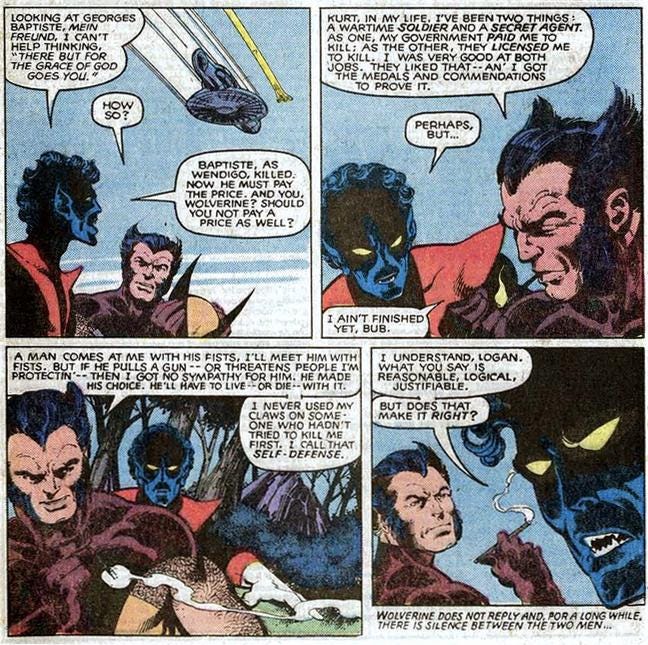
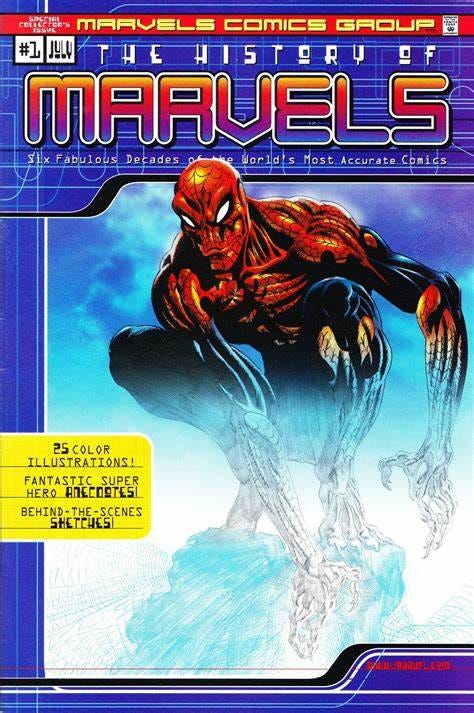
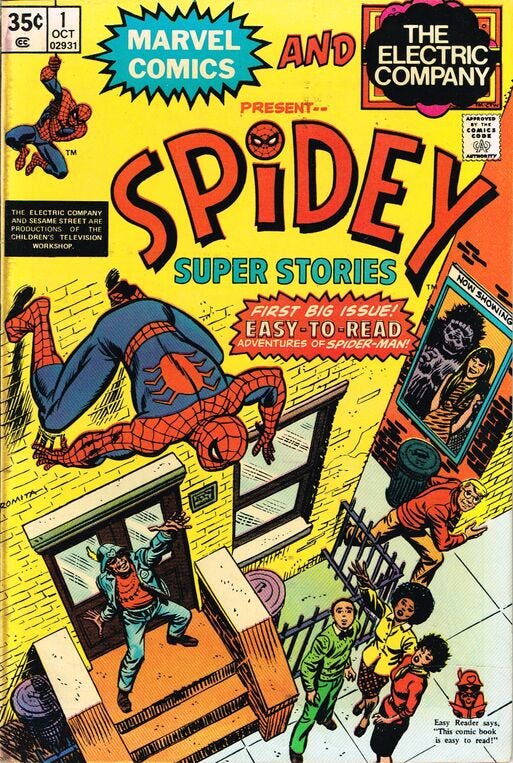
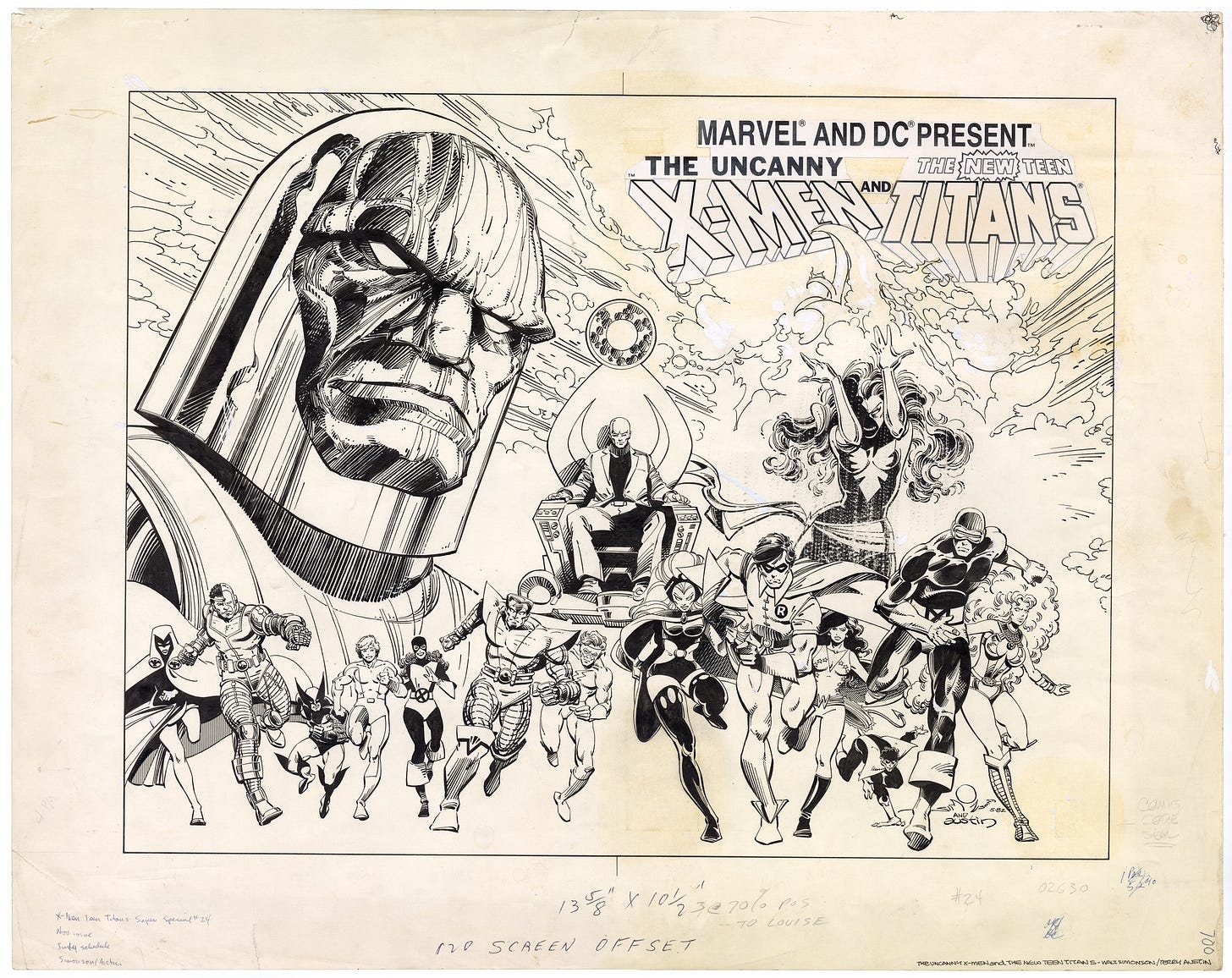
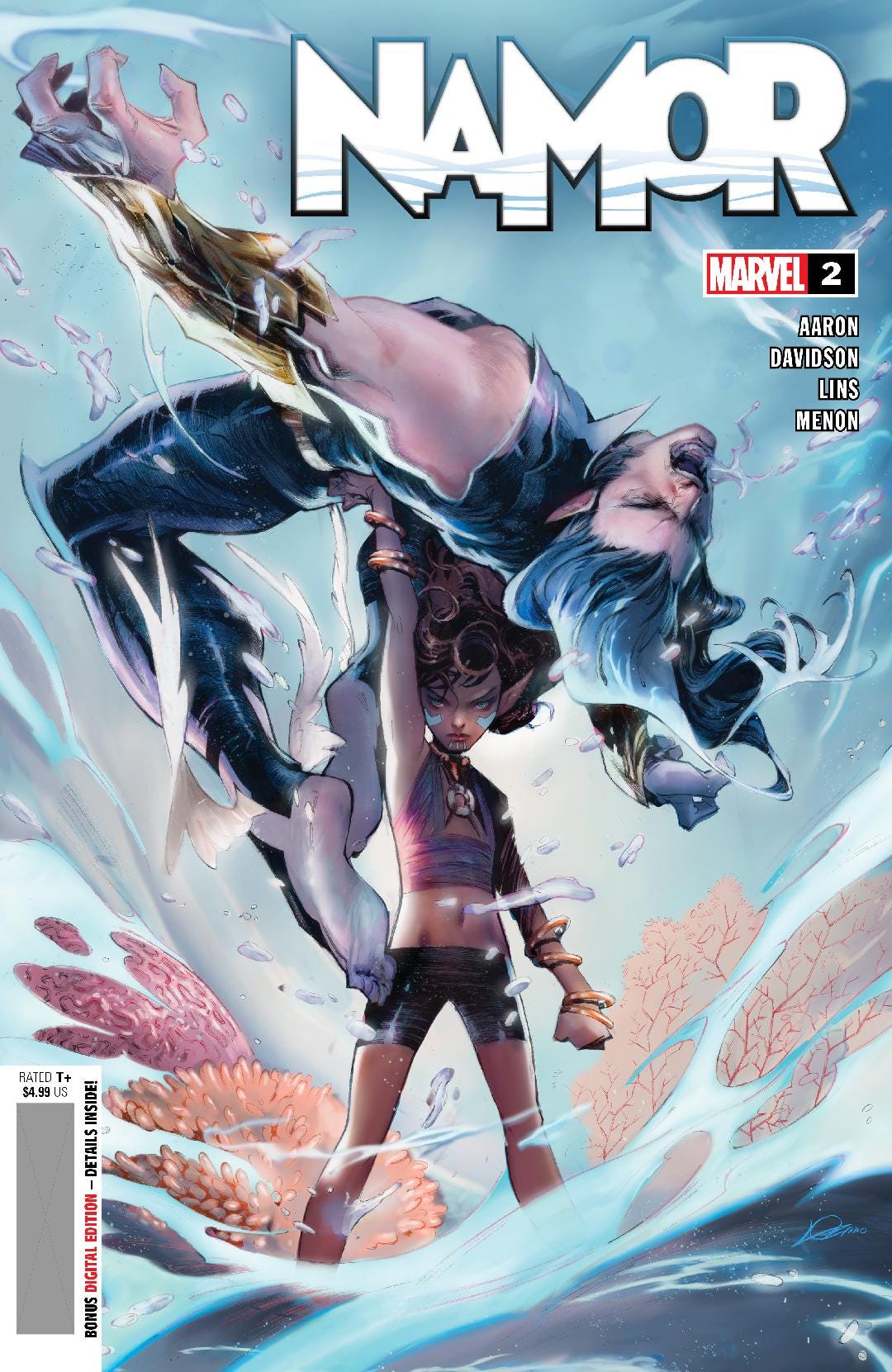
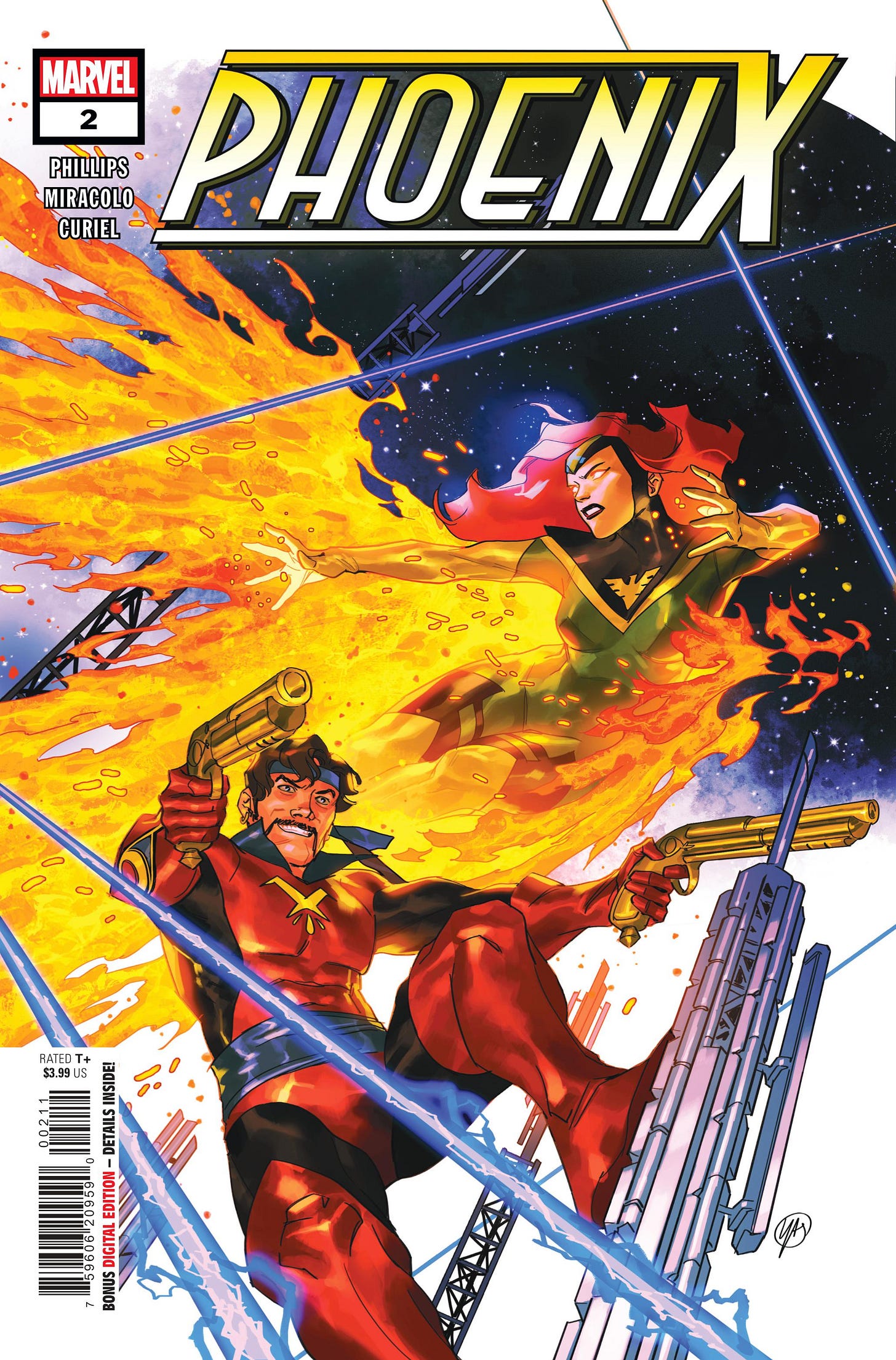
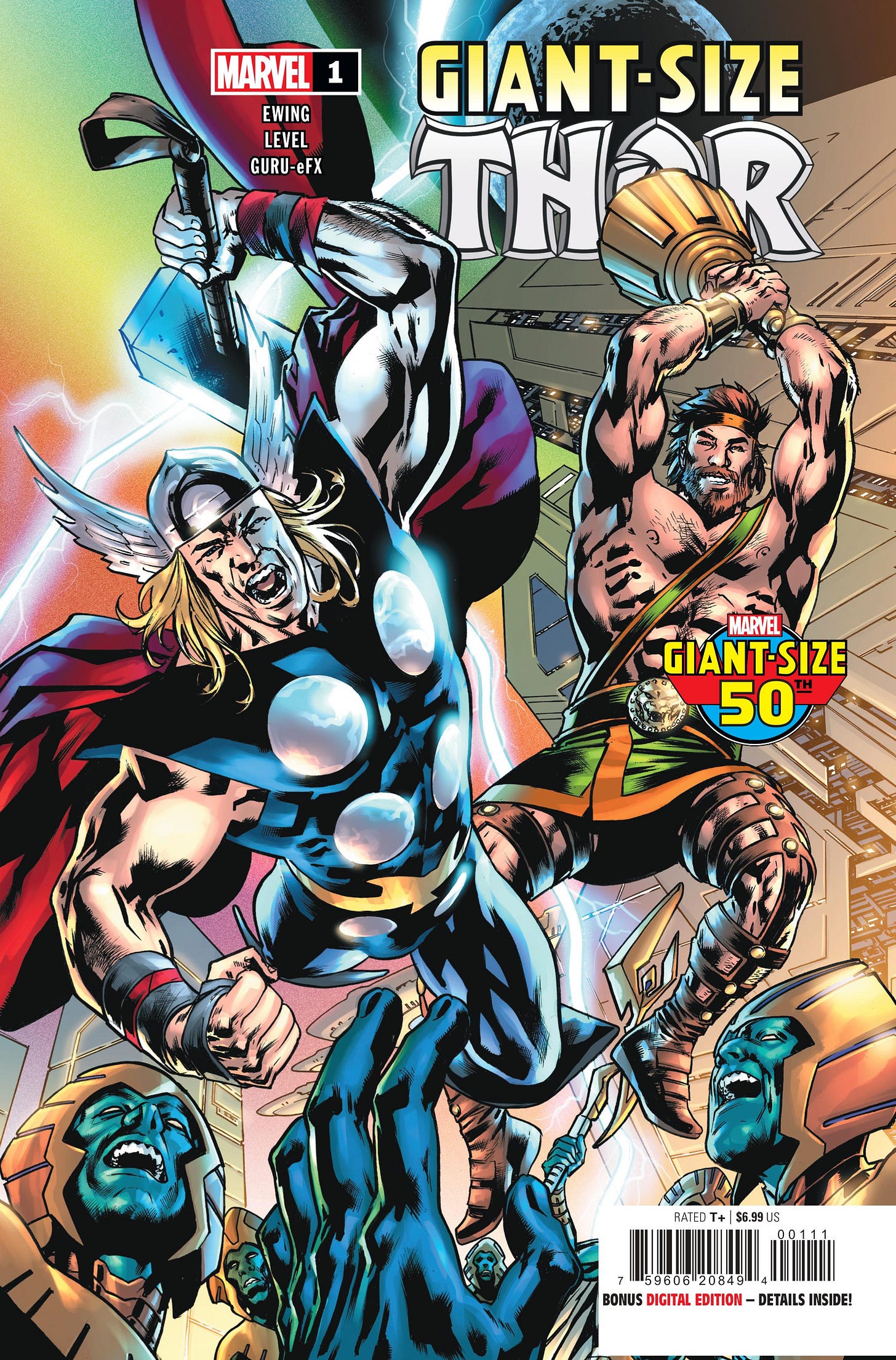

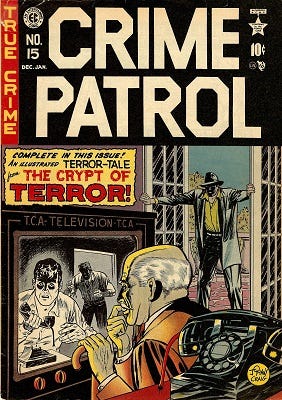
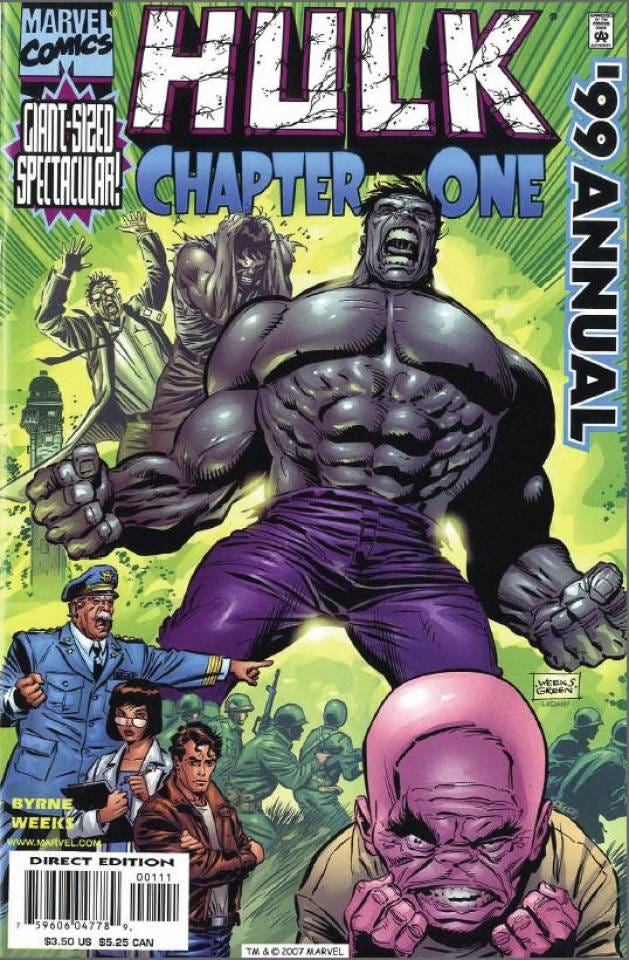
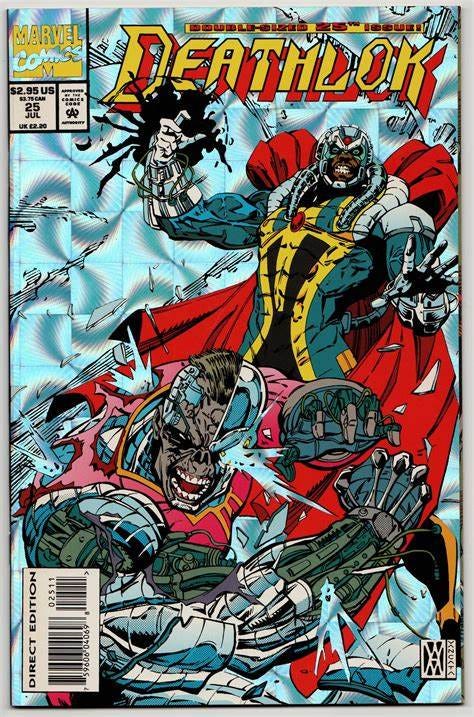
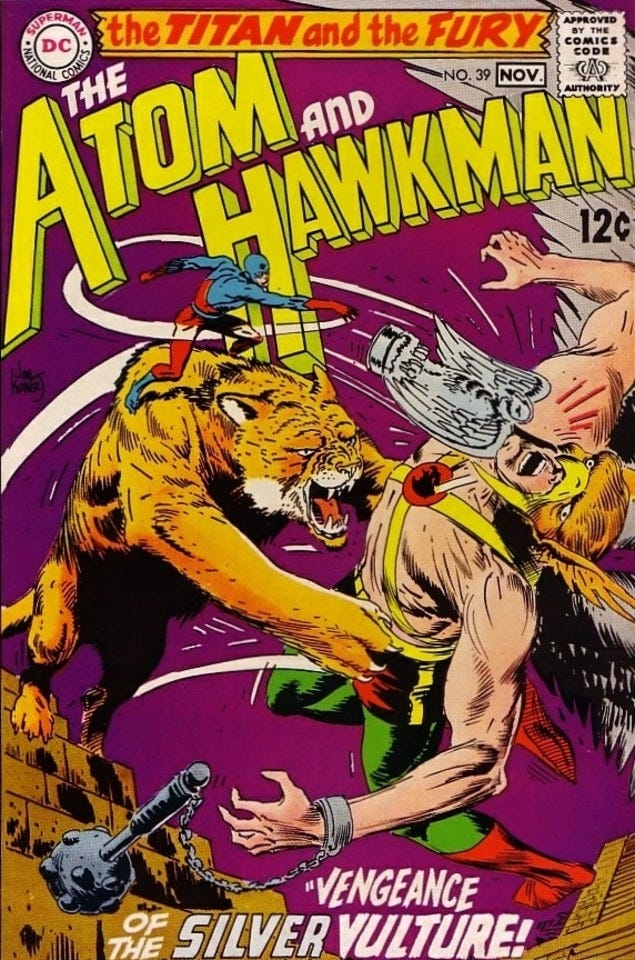
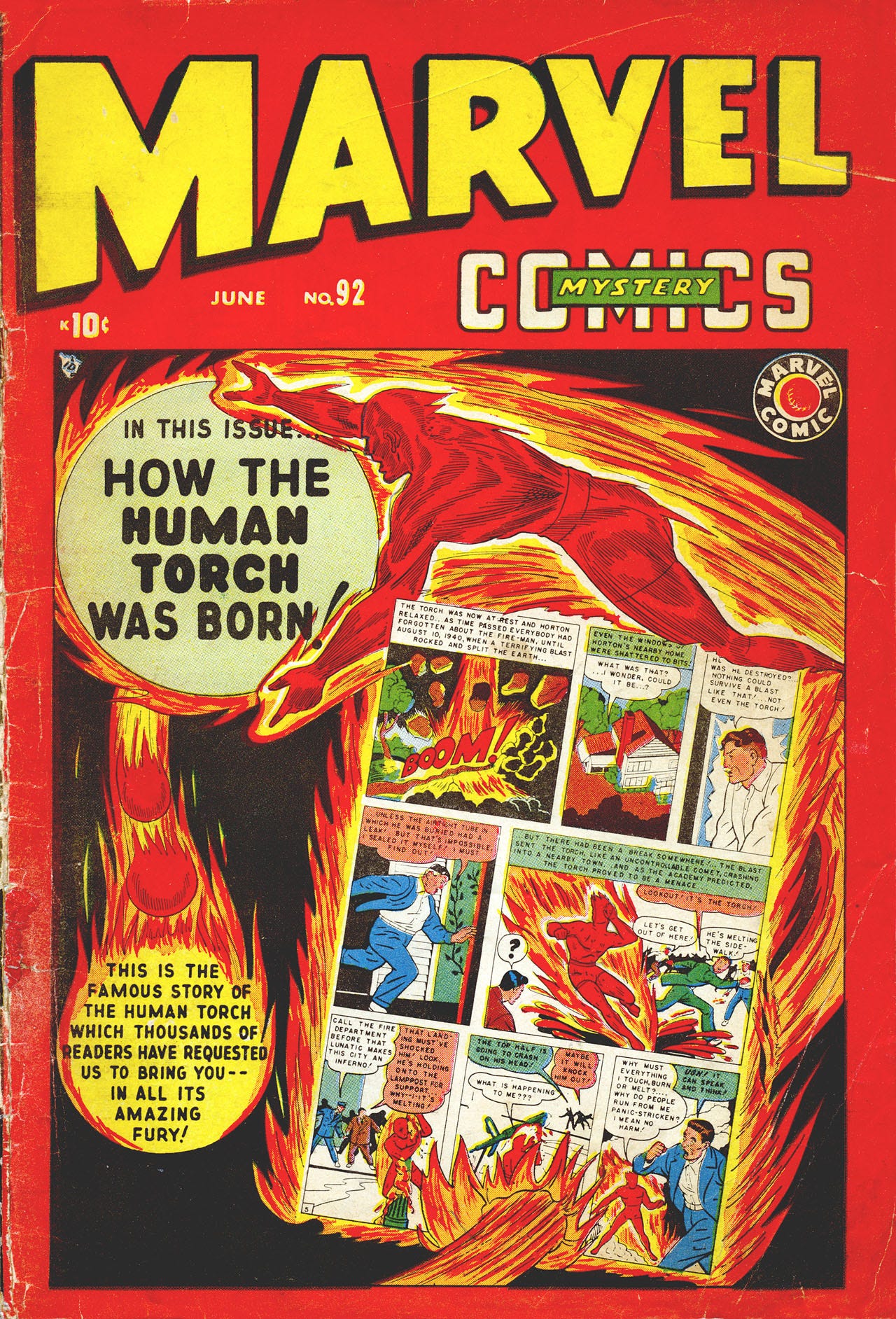
A lot of people have asked questions about things you didn't like about Krakoa or tried to get you to talk about things you didn't like. But I'm curious, are there things about Krakoa or the Krakoa era that you like? That you thought was done really well? Obviously with the editorial change there's a new direction and status quo but as an editor is there anything that makes you wish you had a chance to play in the krakoa "sandbox"? Any lessons learned or developments unique to the Krakoa status quo that you think should carry forward through X-Men stories? Not in a literal "we need to always have magic plant gates you can teleport with" or something but more of a philosophy or theory of storytelling in terms of X-Men. Like how you're adamant it's out of character for Nightcrawler to murder indiscriminately (even though I LOVE Krakoa I agree with you there that was really jarring and weird, same for Kitty murdering like crazy)
Is Iceman still gonna be showing up by the end of the year, no spoilers necessary, just to know if we're still gonna be getting something from him by the end of year, because so far he hasn't been nowhere to be seen